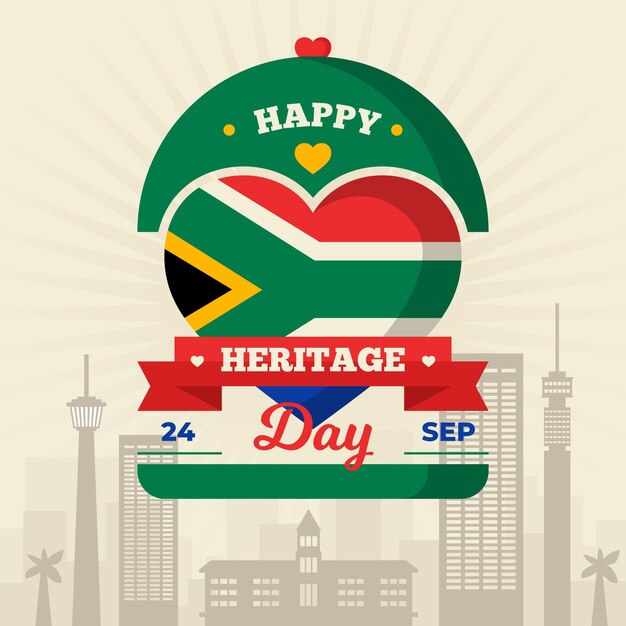

Did you know that Zimbabwe is landlocked and surrounded by South Africa, Botswana, Mozambique, and Zambia?
Zimbabwe is home to the majestic Victoria Falls, one of the world’s largest waterfalls.
The country was formerly known as Rhodesia until it gained independence in 1980.
Zimbabwe’s official languages are English, Shona, and Ndebele.
Great Zimbabwe, an ancient stone city, is a UNESCO World Heritage Site and one of Zimbabwe’s most famous landmarks.
Zimbabwe has a diverse wildlife population, including elephants, lions, and rhinos.
The country’s currency used to be the Zimbabwean dollar, but it has been replaced by the US dollar and other foreign currencies.
Zimbabwean cuisine is known for dishes like sadza (a maize-based staple) and biltong (dried cured meat).
Zimbabwe has a rich cultural heritage, with traditional music, dance, and art playing a vital role in the society.
The country experiences a subtropical climate with rainy seasons from November to March.
Zimbabwean sports are dominated by football (soccer) and cricket.
Zimbabwe is home to Hwange National Park, one of Africa’s largest game reserves.
Did you know that the stone sculptures from Zimbabwe, known as Shona sculpture, are renowned worldwide for their intricate designs?
Zimbabwe has a troubled political history, with periods of economic turmoil and political instability.
The country is named after the ancient Kingdom of Zimbabwe, which means great houses in the Shona language.
Zimbabweans are known for their warm hospitality and friendly nature.
Zimbabwe is a popular destination for safari enthusiasts, with opportunities to spot the Big Five (lion, elephant, buffalo, leopard, and rhino).
The country is blessed with natural beauty, including stunning landscapes and national parks.
Zimbabwe has a high literacy rate compared to many other African countries.
The country has a vibrant traditional fashion scene, with colorful outfits and accessories being a prominent part of Zimbabwean culture.
Zimbabwe’s economy is mainly driven by agriculture, mining, and tourism.
The Great Zimbabwe Ruins are an architectural marvel, dating back to the 11th century.
Zimbabwe has produced several world-class athletes, particularly in long-distance running and cricket.
The country’s music scene is characterized by genres like chimurenga, sungura, and gospel.
Zimbabweans celebrate several traditional festivals, such as the Harare International Festival of the Arts and the Mbira Festival.
The country has a rich history of rock art, with ancient paintings and engravings found in various locations.
Zimbabwe has a vibrant market culture, with bustling markets selling traditional crafts, fresh produce, and clothing.
The country’s education system is renowned, producing highly skilled professionals in various fields.
Zimbabwe’s landscape is incredibly diverse, ranging from the famous Matobo Hills to the scenic Eastern Highlands.
The country has a unique social structure based on extended family units known as musha.
Zimbabwe was once a major center of gold production and trade during the kingdom of Great Zimbabwe.
The country has a turbulent political past, with Robert Mugabe serving as its ruler for nearly four decades.
Zimbabwean literature, including works by authors like Dambudzo Marechera and Chenjerai Hove, has gained international acclaim.
Zimbabwe’s tourism industry is growing rapidly, with visitors flocking to experience its natural beauty and cultural heritage.
The country has a rich mining history, with significant reserves of gold, platinum, and diamonds.
Zimbabweans are known for their love of soccer, with local leagues attracting large crowds and passionate fans.
The country is renowned for its vibrant traditional dance forms, such as the mbira dance and the Jerusarema.
Zimbabwe has a strong sense of community, with communal labor practices like harambee being common.
The country’s national anthem, Simudzai Mureza WeZimbabwe, is a source of national pride and unity.
The Victoria Falls Bridge, spanning the Zambezi River, offers breathtaking views and is a popular spot for bungee jumping.
Zimbabwe’s cultural heritage is preserved through various museums and heritage sites, such as the National Museum of Zimbabwe.
The nation’s flag features horizontal stripes of green, gold, red, black, and white, representing natural resources, wealth, bloodshed, heritage, and peace, respectively.
Zimbabwe is home to numerous ethnic groups, including Shona, Ndebele, Tonga, and Venda, each with its own unique traditions and languages.
The country has a rich spiritual heritage, with various indigenous beliefs and practices coexisting with Christianity and other religions.
Despite its challenges, Zimbabwe remains a resilient and beautiful country, with a rich cultural tapestry that continues to inspire and captivate the world.
Around the world, coffee enthusiasts enjoy Monin coffee concentrate since it is a multipurpose product. Conveniently combining…
The Importance of Choosing the Right Shower for Your Bathroom Renovating your bathroom can be…
Usain Bolt holds the record for the fastest 100-meter sprint in history.Bolt was named Sportsman…
Love is in the air... and it smells suspiciously like chocolate!Roses are red, violets are…
Life's a beach, take a picture and relax.Sun, sand, and salty kisses. That's what beach…
Hungary is home to the largest thermal water cave system in the world.The Rubik's Cube…